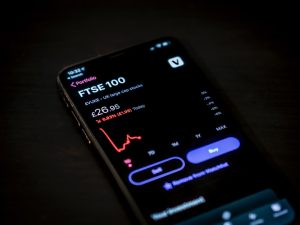SMI Forex, also known as the Stochastic Momentum Index, is a popular technical indicator used in Forex trading. It is based on the stochastic oscillator and can help traders identify overbought and oversold conditions in the market. In this article, we will take a closer look at how to use SMI Forex in your trading strategy.
Understanding the Stochastic Momentum Index (SMI)
The Stochastic Momentum Index is a technical analysis indicator that is used to identify overbought or oversold conditions in the market. It is based on the stochastic oscillator, which measures the momentum of price movements. The SMI is calculated by taking the difference between the closing price and the midpoint of the high-low range over a certain period of time.
The SMI is plotted as a line that oscillates between -100 and +100. When the SMI is above +40, it is considered overbought, and when it is below -40, it is considered oversold. Traders use the SMI to identify potential entry and exit points in the market.
How to Use SMI Forex in Your Trading Strategy
1. Identify Overbought and Oversold Conditions
The first step in using SMI Forex is to identify overbought and oversold conditions in the market. As mentioned earlier, when the SMI is above +40, it is considered overbought, and when it is below -40, it is considered oversold.
Traders can use this information to enter or exit trades. For example, if the SMI is above +40, it may be a good time to sell or take profits on a long position. Conversely, if the SMI is below -40, it may be a good time to buy or take profits on a short position.
2. Use SMI with Other Indicators
While the SMI can be a powerful tool on its own, it is often used in combination with other indicators to confirm signals. For example, traders may look for divergence between the SMI and price movements to identify potential trend reversals.
Divergence occurs when the SMI moves in the opposite direction of price movements. For example, if price is making higher highs, but the SMI is making lower highs, it could be a signal that the trend is losing momentum and may reverse.
3. Set Stop Losses and Take Profits
Like any trading strategy, it is important to set stop losses and take profits when using SMI Forex. Stop losses help limit potential losses if the market moves against your trade, while take profits help lock in profits when the market moves in your favor.
Traders may use the SMI to set their stop loss and take profit levels. For example, if the SMI is above +40 and you are short, you may set your stop loss just above the +40 level to limit potential losses. Similarly, if the SMI is below -40 and you are long, you may set your stop loss just below the -40 level.
4. Practice Risk Management
Using SMI Forex, like any trading strategy, carries risks. It is important to practice good risk management to minimize potential losses. Traders should only risk a small percentage of their trading account on each trade and should never risk more than they can afford to lose.
Conclusion
SMI Forex is a powerful technical indicator that can help traders identify overbought and oversold conditions in the market. By using the SMI in combination with other indicators and setting stop losses and take profits, traders can help minimize potential losses and maximize profits. However, like any trading strategy, it is important to practice good risk management and never risk more than you can afford to lose.





